DEI programs are tools for student development, not political fodder
UC Berkeley continues to prioritize diversity, equity and inclusion work on campus and recently obtained federal designation as an Asian American Pacific Islander-serving institution.
June 8, 2023

Students and staff celebrate the 50th anniversary of UC Berkeley’s Asian American and Asian Diasporas Studies program with Director of Engagement for Berkeley’s Asian American and Pacific Islander (AAPI) Thriving Strategy, Lisa Tsuchitani, third from right. (Photo courtesy of Lisa Tsuchitani)
States across the country are seeking to eliminate public education funding for diversity, equity and inclusion (DEI) programs and research in campaigns led by politicians who openly devalue and criticize DEI work as part of a “woke”“ agenda.
But for more than a decade, Lisa Tsuchitani and Eunice Kwon have run DEI programs and taught courses at UC Berkeley that support Asian American and Pacific Islander (AAPI) students. And they say they’ll continue striving for an inclusive campus climate.
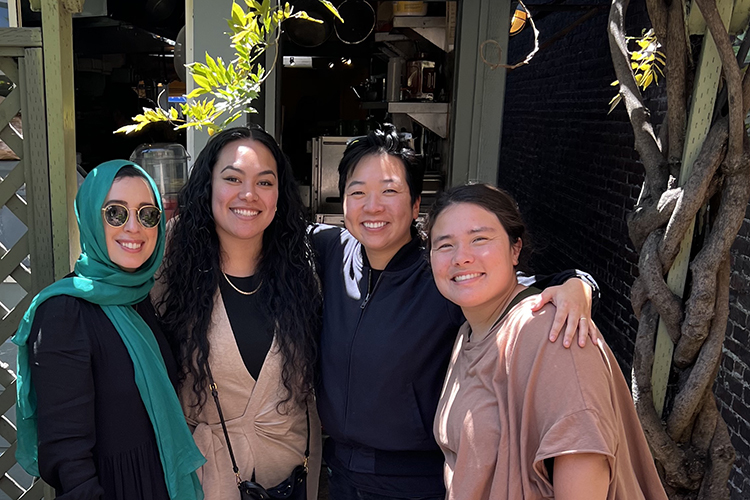
Eunice Kwon, second from right, with UC Berkeley’s Asian Pacific American Student Development program staff. (Photo courtesy of Eunice Kwon)
“In essence, we’re giving underrepresented students the resources to become more grounded in their identity and (to) have opportunities to connect with peers who have similar experiences,” said Kwon, director of Berkeley’s Asian Pacific American Student Development program. “This work, unfortunately, has been so hyper-politicized it is not seen for what it truly is.”
Kwon also co-led a committee that helped Berkeley obtain federal designation last month as an Asian American Pacific Islander-serving institution. This title gave the campus official status as a minority-serving institution for the first time. Berkeley also is pursuing designation as a Hispanic-serving institution and as an anti-racist campus.
Tsuchitani, a Berkeley alumna and faculty member in the Asian American Studies Program of the Department of Ethnic Studies, will serve as inaugural Director of Engagement for Berkeley’s Asian American and Pacific Islander (AAPI) Thriving Strategy. She will spend the next year partnering with Kwon and other campus leaders to create a vision and framework that will address the ongoing challenges experienced by Berkeley’s AAPI student, staff, and faculty.
“Historically, this work has not been valued,” said Tsuchitani. “But as long as students feel like this work is meaningful to them – that they feel seen, heard, and respected – that’s enough for me to remain committed to these efforts.”
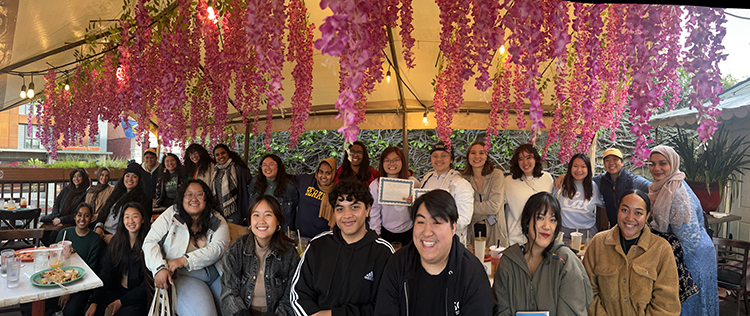
UC Berkeley Asian Pacific American Student Development program staff celebrated students and their accomplishments at an annual retreat. The program’s director, Eunice Kwon, said that DEI work is innately beneficial in producing student leadership. (Photo courtesy of Eunice Kwon)
Berkeley News spoke with the pair recently about the cultural and historical complexities within the AAPI community and how the greater Berkeley community can help create a more inclusive campus climate for all.
Berkeley News: Lisa, you have quite the task of developing a framework and strategy for AAPI students, staff and faculty to thrive on campus. Where do you start?
Lisa Tsuchitani: This institutional recognition of and commitment to addressing AAPI community needs is historically significant for our campus.
Efforts to visibilize these complex and diverse needs of AAPI undergraduate and graduate students, staff and faculty on our campus are not new, however. One of the first Asian American studies programs in the nation was created here in 1969, followed by the appointment of the first advisory committee on Asian American affairs by Chancellor Heyman in 1987, and the 2001 publication of “Visibility and Marginality: Asian Pacific Americans at Berkeley.”
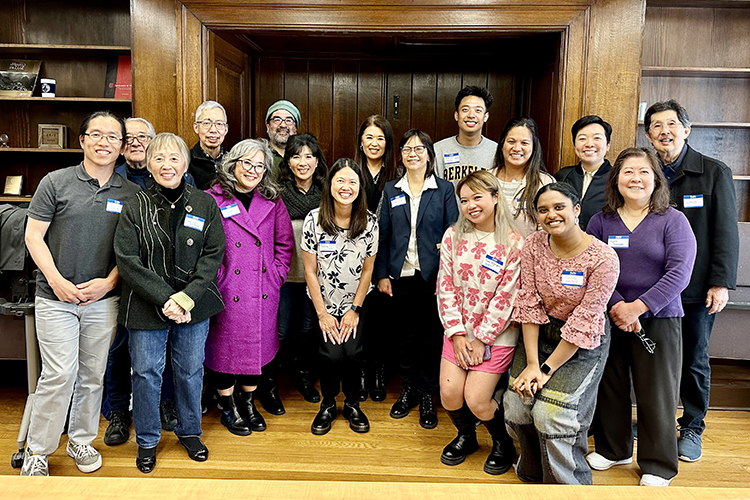
Members of UC Berkeley’s Asian American and Pacific Islander Standing Committee consist of students, staff and faculty. (Photo courtesy of Lisa Tsuchitani)
In 2019, we created the Asian American and Pacific Islander Standing Committee, an inaugural, permanent advisory body to the chancellor and her cabinet on AAPI issues. In 2021, the committee released a report, “Twenty Years Later: Asian Americans and Pacific Islanders at UC Berkeley,” which concluded that the challenges facing AAPI communities at UC Berkeley have not significantly changed.
More specifically, there is a persistent decline in AAPI staff representation in managerial/supervisory roles. And our faculty still do not reflect our AAPI student body — i.e., we still do not have any Pacific Islander-identifying Academic Senate faculty on campus.
This history is an important foundation for our work moving forward.
Eunice, working directly with AAPI students as Asian Pacific American Student program director, what challenges do they face on campus that people may not know about?
Eunice Kwon: There is a perceived perception that Asian Americans on this campus are overrepresented, and that they are doing well academically. But actually, when we break it down, we see that Hmong, Lao and other Asian communities are very underrepresented on this campus in relation to California’s demographics.
They also have the highest percentage of low-income students in their populations. We see a lot of programs on this campus that offer scholarships for federally-designated underrepresented minorities, and right now that doesn’t include those student populations, even though they have all of the factors that signify they need that support.
Pacific Islander students are included under the AAPI umbrella, but their experiences are often invisiblized and left out of the conversation altogether.
It’s really important for faculty and staff to be aware of that, because there is a false perception around which students need support, and that can be informed by the way some AAPI students are racialized.
In this work, how can we address the nuances that exist within the AAPI community?
Kwon: The term Asian American is a political and coalitional project that started here at Berkeley in the 1960s. And I think that is true now of the terms AAPI or Asian Pacific American (APA). But when people are using those terms to identify people, or a culture, it can flatten or erase so many people and communities within those terms — homogenizing them.
AAPI is such a diverse and wide-ranging umbrella term. And from my experience, most of the AAPI students that we have coming to Berkeley don’t identify as AAPI, they identify with their specific ethnic groups.
When we think about AAPI work and advocacy, we have to always make sure that we’re building opportunities for different voices and cultures to reach agreements together. And to be very intentional and hyper-specific about the programming we provide, and when we provide it.
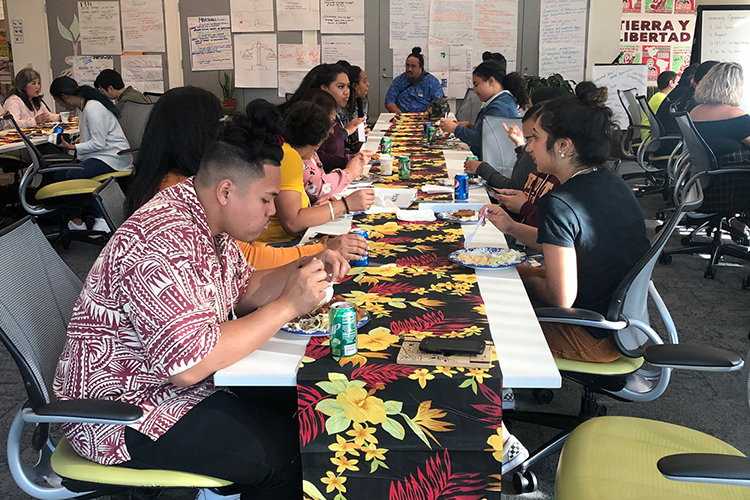
The Asian Pacific American Student Development office, partnered with the community non-profit Empowering Pacific Islander Communities (EPIC) a few years ago to host a four-day summer intensive program called PILOT — Pacific Islander Leaders of Tomorrow, where students learned about advocacy and identity. (Photo courtesy of UC Berkeley Division of Equity and Inclusion)
Tsuchitani: From a quantitative standpoint, the ways that we collect data on AAPI communities now are more robust than before, but definitely still not at a place where we are meaningfully capturing those nuances.
People assume that since there is a higher percentage of AAPI undergraduate students who are enrolled on our campus, they are thriving. When you disaggregate those numbers for particular communities, however, you find that the story is very different.
We are trying to create a discourse and narrative about AAPI communities that is informed by both aggregated and disaggregated, as well as quantitative and qualitative, understandings about who we are and the respective needs that our communities have.
I really appreciate this opportunity to bridge the academic side of campus with the administrative side of campus. While they may seem like disparate parts of Berkeley, from a student vantage point, they’re all connected.
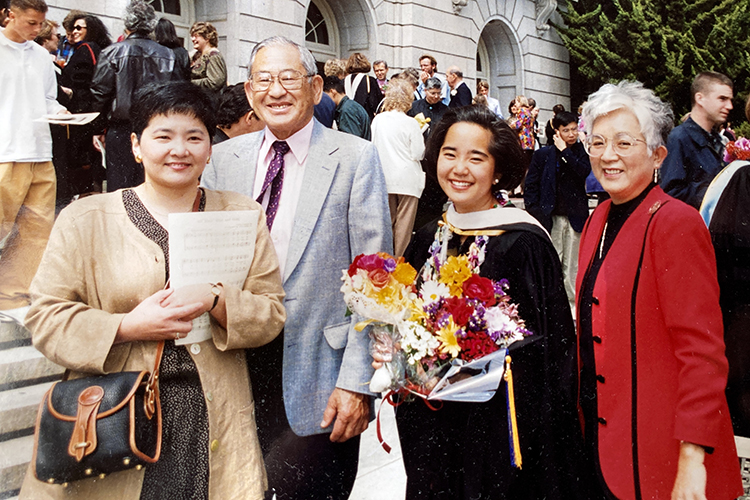
Tsuchitani, a Berkeley alumna, celebrated with her family during her graduation as a Berkeley undergraduate. She said that from a student vantage point, all programs on campus are connected and not separate. (Photo courtesy of Lisa Tsuchitani)
How should academic curriculum and resources transform with the changing demographics of the AAPI student community?
Kwon: Even as there are more AAPI students on our campus every year, the things that are being taught to reflect AAPI cultures and histories are still not at the level they need to be on our campus.
Our Filipino languages program is so highly utilized, and there is a need for more of those classes. But those languages are still seen as a service language on our campus. So, there’s little to no structural support to grow these programs with higher level course offerings. This is the legacy of a racist, Eurocentric history of devaluing certain cultures in academic settings.
And that really impacts Pacific Islanders, it impacts a lot of underrepresented groups in the AAPI community. Curriculum offerings are so central to student experiences, so we have to seek those academic changes to be part of the AAPI thriving framework. Expand those programs that meet student needs.
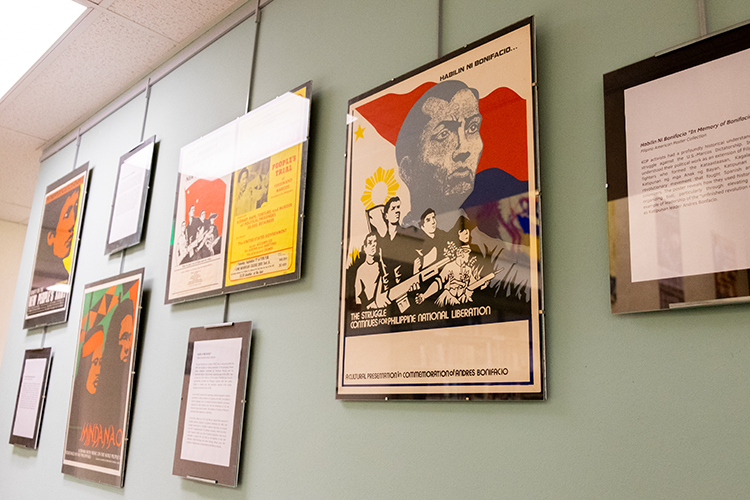
The Ethnic Studies Library highlighted the civil rights work of Filipinx/Filipinx American students during the 1970s and 80s in this11 item exhibit. (UC Berkeley photo by Sofia Liaschaeva)
Tsuchitani: As an educator, I’ve tried to adapt my curricula throughout the years to address the changing needs and experiences that students bring to our academic spaces. In order to inspire our students to be the best scholars they can be, we need to teach them how to apply theory in ways that are relevant to their lives.
This is something that the field of ethnic studies has strived to do since its founding.
Being Asian American in the 1960s meant something different than it does now. It’s important to root the work that we do in a specific historical context while simultaneously acknowledging the institutional legacies we have inherited. It’s also important to do so in ways that empower people to see themselves as agents of change. Not to romanticize or glorify the past, but to take from the past whatever’s relevant and meaningful and continue to reimagine what’s possible for the future.

Leaders in the Third World Liberation Front strike march at UC Berkeley in 1969. The march was part of a movement that spurred the creation of ethnic studies programs across the country. (Photo courtesy UC Berkeley Ethnic Studies Library)
Why is this work important for people on campus who are outside of these communities?
Kwon: On our campus, the heart of diversity, equity, inclusion and belonging work is really being able to be grounded in who you are and to see other people for who they are. And we have AAPI students that need more support and resources than others in order to feel like they belong on campus.
A healthy student population, a supportive student population, that’s something that benefits everybody on campus.
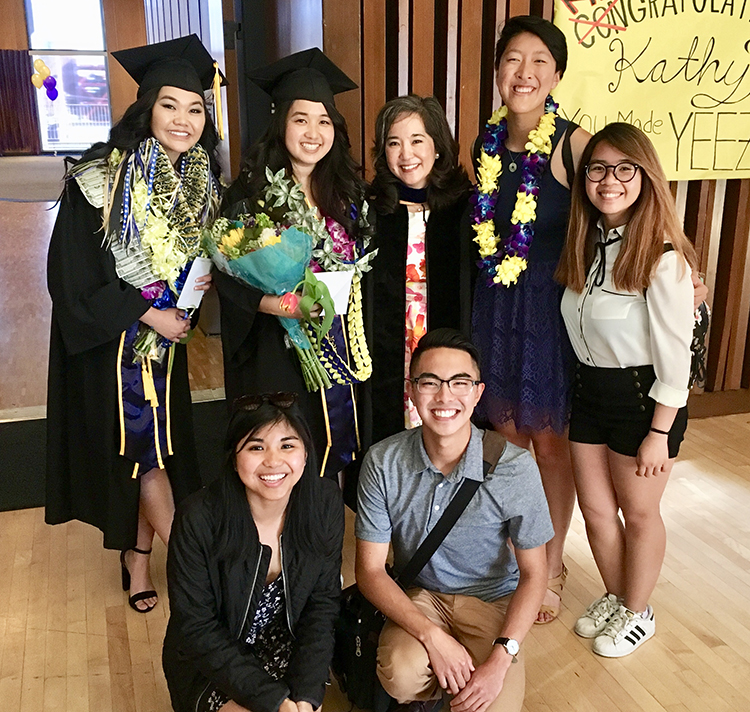
Lisa Tsuchitani celebrated with her students at their program’s graduation ceremony. (Photo courtesy of Lisa Tsuchitani)
Tsuchitani: This work is a reflection of our broader commitment as an institution to principles of community that recognize the intrinsic relationship between diversity and excellence in all of our endeavors. Our federal designation as an Asian American Pacific Islander-serving institution also meets one of President Drake’s priorities for the UC system — of expanding opportunity and excellence for all of our students.
This designation — and becoming an AAPI Thriving institution, more broadly speaking — is a reminder of our obligation to serve the future leaders of this state and of the world. I believe this responsibility is a collective one and look forward to collaborating across communities, as well as academic and administrative programs, departments and divisions, to realize a campus climate where everyone can feel safe, included and valued.
How should Berkeley’s campus community stay engaged in this work moving forward?
Kwon: The idea that everybody benefits from learning about all of our country’s histories is really under attack right now. And so being able to support ethnic studies, African American studies, Asian American studies in your communities is going to ultimately be really helpful.
It supports the values and the reasons behind why we’re doing this work.
More specifically, I think that in our country, and even on our own campus, we still really default to this Black-white binary understanding of race and history. And I think critical ethnic studies is really about being able to think critically and understand the nuances and contradictions and the histories and all of the things in between.
Pushing yourself to understand people different from yourself is an important part of the work.
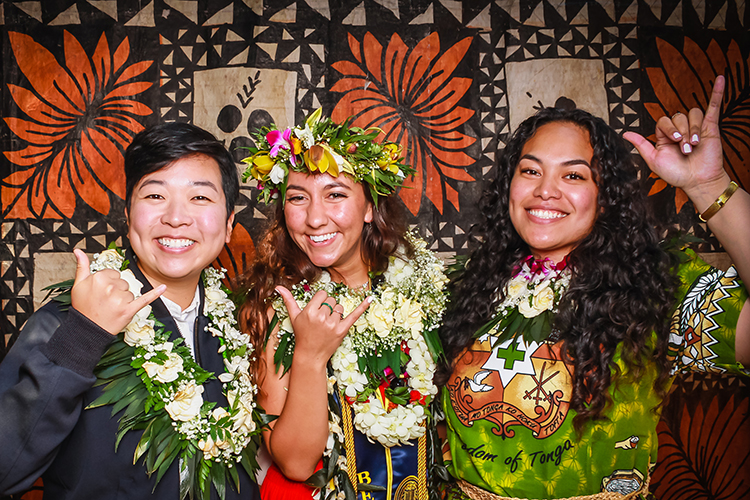
In May 2022, Kwon celebrated with new alumna Sara Olsen, and Angel Halafihi, the Pacific Islander Initiation program manager. Pacific Islanders make up around 0.1% of the campus population. (Photo courtesy of Eunice Kwon)
Tsuchitani: Berkeley is a large and intimidating campus where making connections and sustaining relationships can be challenging. The pandemic, in many ways, complicated and hindered our abilities to stay connected with one another. I hope to create spaces for communities to share their hopes and visions for what thriving can look like and mean for our campus.
Our federal designation as an Asian American Pacific Islander-serving institution is one way our campus can strengthen its commitment to becoming an AAPI Thriving institution. Being designated in this way means that we are now eligible to apply for competitive federal funds to improve and expand the ways we serve AAPI populations.
I am excited about this opportunity to reimagine academic, programmatic and research opportunities for AAPI campus communities in our collective pursuit of greater educational access and equity at Berkeley.
